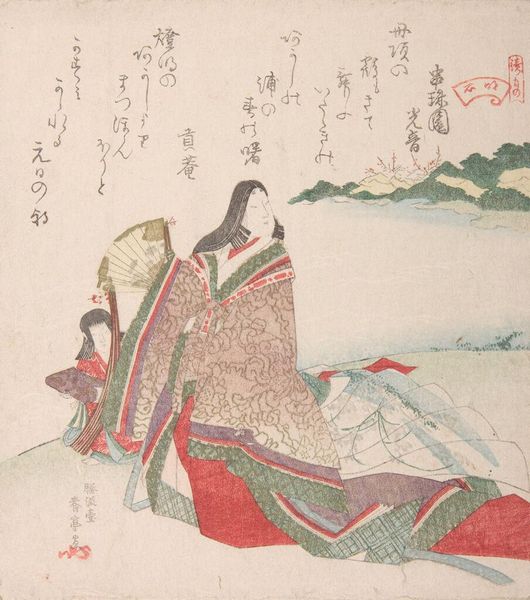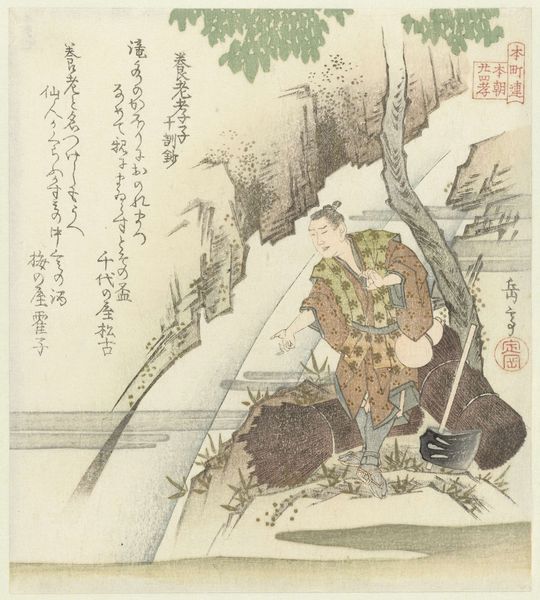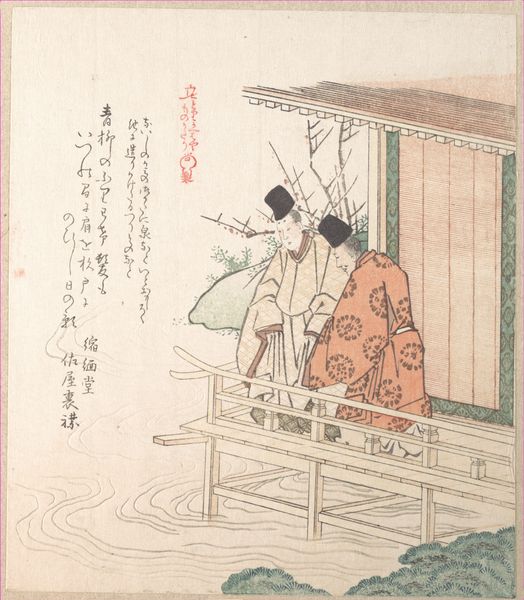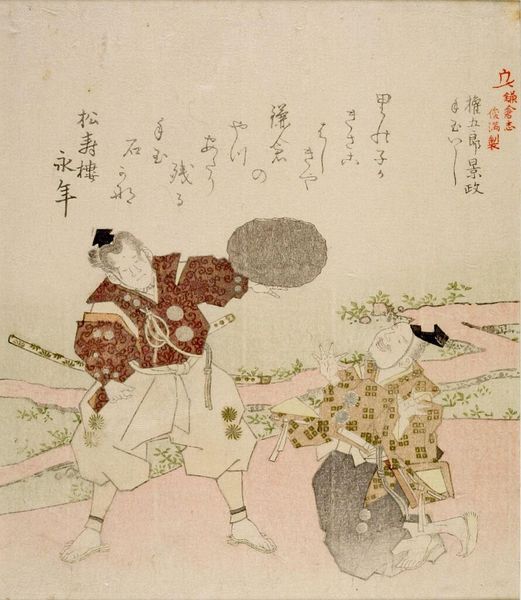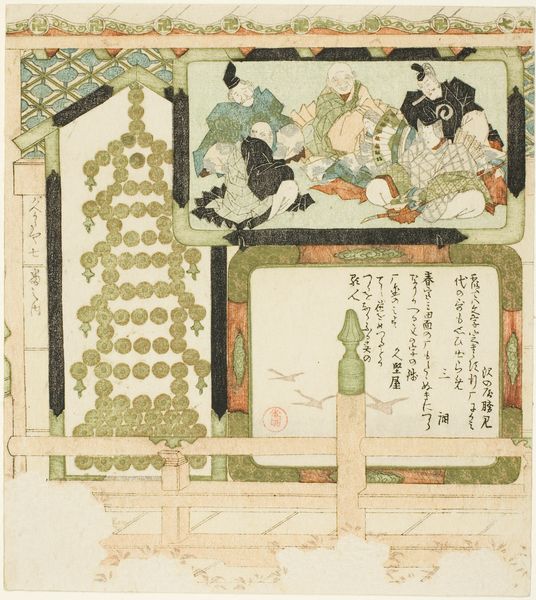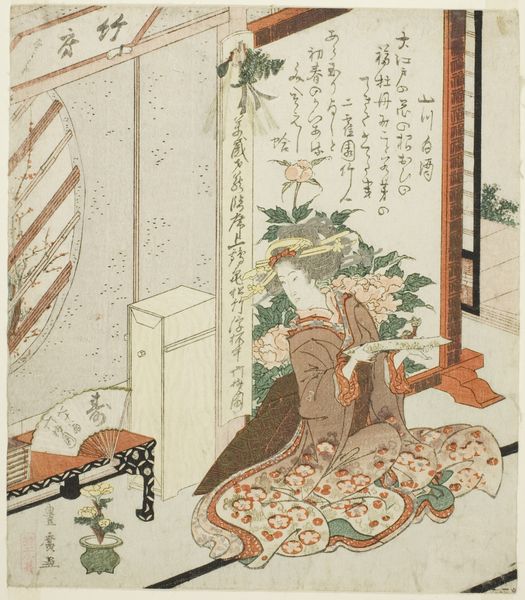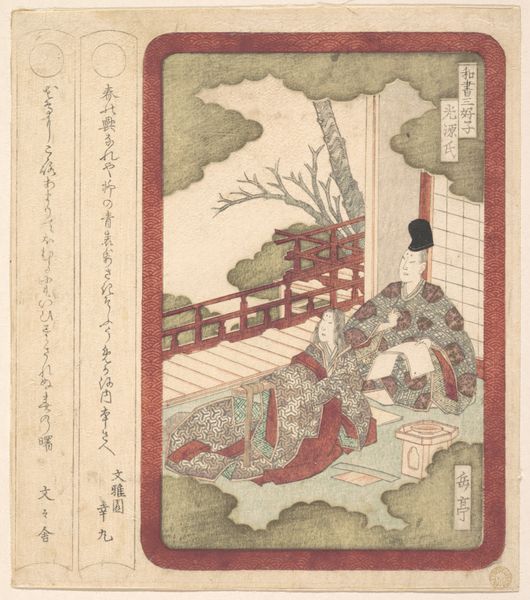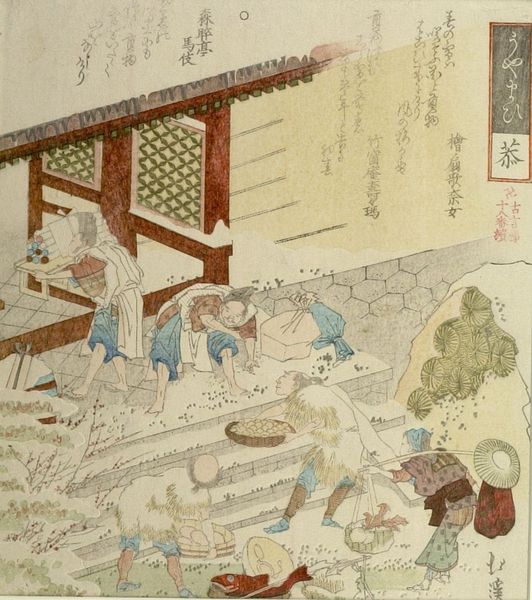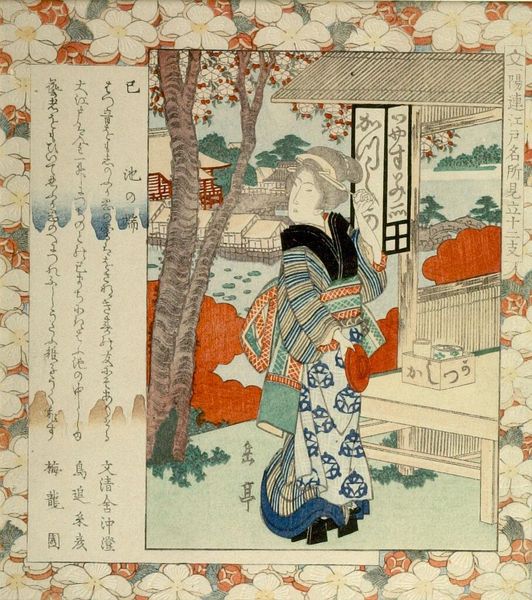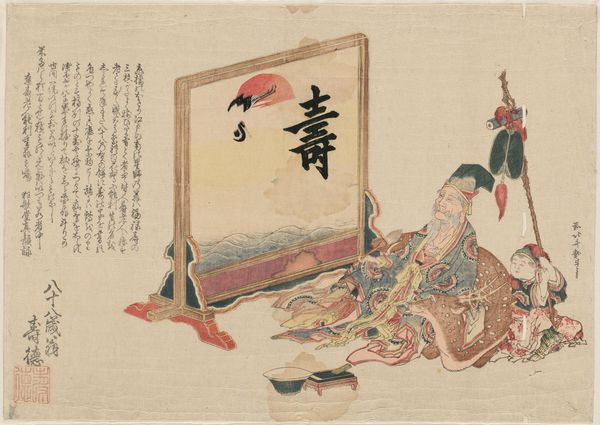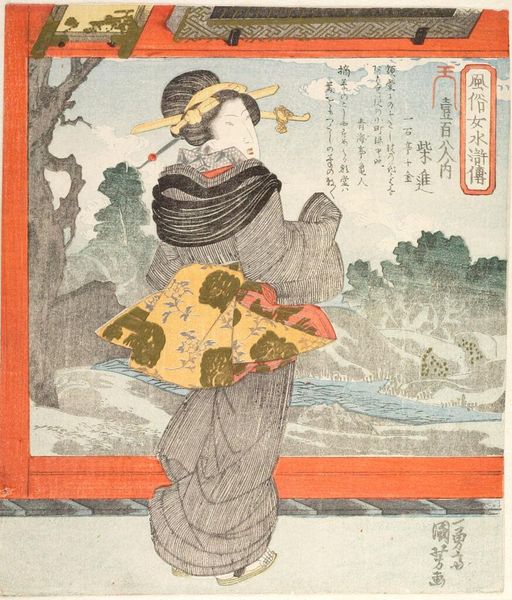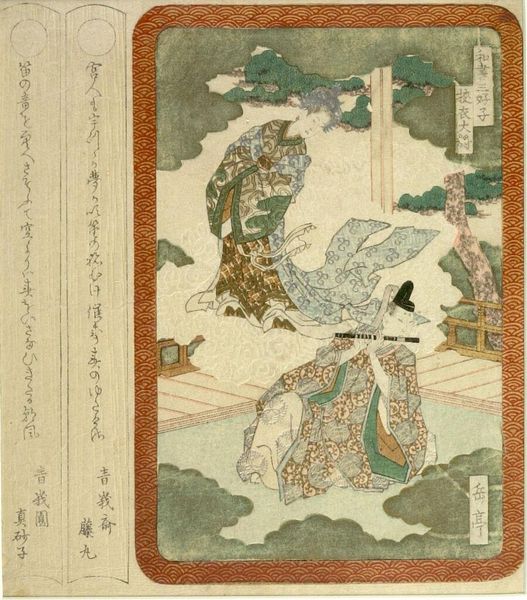
Votive Paintings (EmadÅ) of Peonies, Pheasant and Futami Bay (Futami ga Ura), Number One (Sono ichi) from the series of Seven for the Hisakataya Club (Hisakataya shichiban no uchi), with poems by Hisagataya and associates c. 1814 - 1819
Dimensions: Paper: H. 20.4 cm x W. 18.3 cm (8 1/16 x 7 3/16 in.)
Copyright: CC0 1.0
Curator: This is a print by Kubo Shunman, born in 1757, entitled "Votive Paintings of Peonies, Pheasant and Futami Bay." It's number one from a series of seven for the Hisakataya Club. Editor: My initial impression is one of layered realities. The painting incorporates smaller paintings, a fan, all framed within what seems to be a structure. Curator: It's fascinating how votive paintings, or "emado," functioned as public expressions of personal wishes. Notice how the image of Futami Bay, with its sacred rocks, embodies a longing for connection, perhaps marital harmony. Editor: Right, and the presence of the Hisakataya Club poems suggests a communal aspect to these desires. How did the club itself influence the visual language chosen? Curator: Clubs like this fostered artistic experimentation. These paintings became a canvas for collective dreams, revealing how social structures helped shape individual and shared aspirations through art. Editor: It's compelling to see the interplay of individual votives and their combined meaning within a larger cultural narrative. Curator: Indeed, a glimpse into a society's collective hopes and anxieties, captured in miniature.
Comments
No comments
Be the first to comment and join the conversation on the ultimate creative platform.
